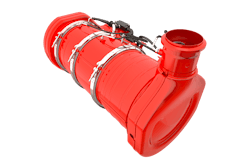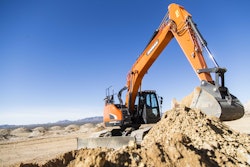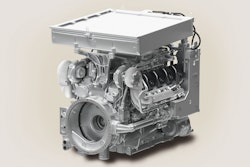The ENVI committee of the European Parliament reached an agreement on September 15 regarding the dossier ENVI/8/01933 on emissions requirements for non-road mobile machinery (Stage V), handing a mandate to Rapporteur Elisabetta Gardini (EPP) and the shadow rapporteurs to start trialogue negotiations with Council and Commission shortly. The file was adopted with 64 votes in favor, zero abstensions and three votes against.
Read more about the impending Stage V regulations in the article Stricter emissions targets arriving in Europe from the July/August issue of OEM Off-Highway magazine.
The agreement is a significant step in the right direction, and CECE, CEMA and FEM -- representing the construction equipment, construction equipment and materials handling manufacturers in Europe -- congratulate the rapporteur and shadow rapporteurs for the important work they accomplished. The new emissions regulation sets highly ambitious requirements in terms of environmental protection, as Europe will impose as of 2019 the strictest emissions limits in the world.
“Importantly, MEPs agreed to extend the transition period with six months and include a solution for replacement engines, both of which are essential elements for industry to make implementation of the new law more feasible,” concludes Sigrid de Vries, Secretary General of CECE (construction equipment association). “Although we still see room for further improvement on both of these issues, we recognize that the outcome offers a good basis for now concluding the process in trialogue.”
“CEMA believes the vote succeeded in striking the right balance between environmental protection and industry concerns, and is confident that the trialogue negotiations will fix some discrepancies, especially when it comes to the 6 months extension of transition period where all chapters of the legislation still need to be aligned,” continues Ulrich Adam, Secretary General of CEMA (the agricultural equipment association).
“The acknowledgement of specific equipment needs, such as mobile cranes, is very welcome though we regret some inconsistencies on their treatment. We hope these will be tackled at the next stage of the decision-making process,” says Olivier Janin, Secretary General of FEM (the Material Handling Manufacturers’ association).
Back in September 2014, the Commission tabled a proposal for a Regulation that would replace the existing Directive, defining new exhaust emissions limits for engines to be placed in non-road mobile machinery (NRMM). This was submitted to Parliament and Council scrutiny. In order to effectively reduce NRMM emissions, the Commission proposed decreasing emissions limits for all NRMM engines and regulating remaining engine types not previously covered by the Directive.
Over the years, the NRMM Directive and its subsequent amendments introduced already increasingly stringent emission standards. Emission limits were lifted in stages—up to Stages III and IV, depending on type — which led to a total emissions cut of more than 95% in the past 15 years.
The Commission proposed the introduction of a Stage V for all NRMM types, with some emission limits aligning with U.S. requirements, and some going far beyond them. The new NRMM regulation regulates particle number (PN) limits – or the number of PM present, regardless of their size – which will be introduced as part of Stage V for most land, rail and water machinery. In its proposal, the Commission had exempted few NRMM categories from PN limits. These include the engines of the largest land machines, those of the smallest inland water vessels, as well as engines installed in locomotives.
The EP committee adopted important modifications compared to the European Commission proposal. Inter alia:
- The extension of the transition period by six months for placing on the market machines with the newly staged engines
- A provision allowing manufacturers to replace worn-out or damaged machine engines with the same type of engines, in order to avoid interruptions and costs at the jobsites for the users
- A provision allowing more time for small companies producing less than 80 units per year
- A provision for narrow tractors where Stage IIIB engines for those tractors shall be considered transition engines for Stage V
- Additional transition time for mobile crane categories
- Avoidance of local schemes which would have created legal uncertainty for manufacturers, contractors and final users
The industry also underlines the adoption of some modifications which could be detrimental to industry competitiveness, such as a compromise amendment saying Member States shall look into the possibility of imposing retrofitting requirements in urban areas and giving financial incentives. Industry also regrets the lack of coherence for the transition scheme for placing on the market of engines, for all machines’ categories, including mobile cranes.

















